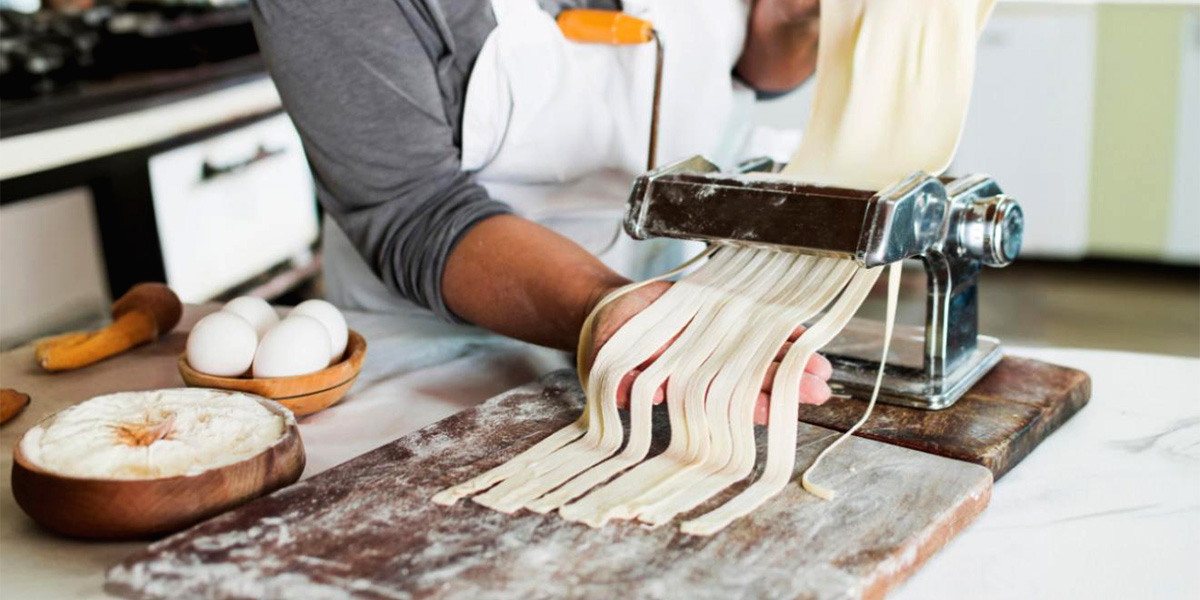When it comes to making delicious tortellini, having the right equipment can make a big difference. A tortellinatrice, or tortellini machine, is an essential tool for pasta makers who want to produce perfect tortellini quickly and efficiently. However, choosing the best tortellinatrice can be challenging because there are two main types: manual and automatic.
What is a Tortellinatrice?
A tortellinatrice is a specialized machine designed to shape and form tortellini pasta. Whether for home use or commercial kitchens, this machine helps in creating uniform tortellini, saving time and ensuring consistent quality. It is widely used in pasta shops, restaurants, and by home chefs who love making fresh pasta.
The tortellinatrice is not a new invention. It has been used for decades in traditional Italian kitchens. It simplifies the pasta-making process by ensuring that every tortellini is properly shaped and sealed. In commercial settings, this can help produce hundreds or even thousands of tortellini per hour.
Manual Tortellinatrice: A Traditional Approach
Manual tortellinatrice machines require human effort to operate. They usually come with a hand crank that you must turn to feed and shape the dough. Manual models are commonly made from stainless steel and designed to last for many years if properly maintained.
Advantages of Manual Tortellinatrice
- Affordable: Manual machines are generally less expensive than automatic models.
- Compact: They take up less space, making them ideal for home kitchens.
- Control: You have complete control over the speed and pressure, which can lead to more precise results.
- Durability: Manual machines tend to have fewer parts that can break or wear out.
- Portable: These machines are lightweight and can be moved easily.
Disadvantages of Manual Tortellinatrice
- Time-Consuming: Producing large quantities of tortellini can take significant time and effort.
- Physical Effort: Continuous hand-cranking can be tiring, especially when making large batches.
- Skill Required: Beginners may need some practice to achieve consistent shapes and sizes.
- Limited Production Capacity: Manual machines are not suitable for high-volume operations.
Automatic Tortellinatrice: Modern and Efficient
Automatic tortellinatrice machines are powered by electricity and can produce tortellini at a much faster rate. They are commonly used in commercial settings but are also available for home use. Some advanced models offer multiple settings, allowing you to adjust the size, filling, and dough thickness.
Advantages of Automatic Tortellinatrice
- High Production Speed: Perfect for restaurants and pasta shops that need to make large volumes quickly.
- Consistency: Produces uniform tortellini with minimal effort.
- Ease of Use: Simple controls make it easy for beginners to operate.
- Less Physical Effort: The machine handles the pressing and cutting automatically.
- Customizable Settings: Some models offer adjustments for dough thickness, size, and shape.
- Time-Saving: You can produce hundreds of tortellini in just a few minutes.
Disadvantages of Automatic Tortellinatrice
- Expensive: These machines are significantly more costly than manual ones.
- Larger Size: They require more counter and storage space.
- Maintenance: More components mean higher chances of mechanical issues and the need for regular maintenance.
- Electricity Required: These machines depend on a power source, which limits portability.
Key Factors to Consider When Choosing a Tortellinatrice
1. Purpose and Frequency of Use
- Home Use: If you make tortellini occasionally, a manual machine is likely sufficient.
- Commercial Use: For regular, high-volume production, an automatic machine is a better investment.
- Special Occasions: If you enjoy making pasta for family gatherings or special events, a manual machine may still be suitable.
2. Budget
- Manual machines are budget-friendly and widely accessible.
- Automatic machines require a higher investment but offer faster production.
- Consider the long-term savings in time and labor when evaluating the cost of an automatic machine.
3. Space Availability
- Manual machines are compact and suitable for small kitchens.
- Automatic machines need more space for operation and storage.
- Ensure you have adequate countertop and storage space before purchasing an automatic model.
4. Skill Level
- Manual machines may require more skill and patience to use effectively.
- Automatic machines are easier for beginners to operate with consistent results.
- Some automatic machines offer guided settings to help beginners achieve perfect tortellini.
5. Maintenance and Durability
- Manual machines are easier to clean and generally last longer with less maintenance.
- Automatic machines need regular maintenance but can handle higher workloads.
- Check the manufacturer’s instructions for cleaning and maintenance requirements to ensure long-term performance.
6. Production Volume
- Manual machines are suitable for small batches.
- Automatic machines can produce large quantities in a short time.
- Consider your expected production volume before deciding which type is best for you.
Which Tortellinatrice is Best for You?
If you enjoy the process of pasta making and don’t need to produce large quantities, a manual tortellinatrice is a great option. It offers control, affordability, and simplicity. Manual machines are particularly suitable for home cooks, pasta enthusiasts, and those who appreciate the traditional method of pasta preparation.
However, if you are running a restaurant, a catering business, or plan to make tortellini frequently, the speed and convenience of an automatic tortellinatrice may be worth the higher cost. Automatic machines can handle large batches quickly and consistently, saving time and reducing manual labor.
It is also worth considering a hybrid solution if you occasionally need to make large batches but primarily cook at home. Some manufacturers offer semi-automatic tortellinatrice models that provide a balance between manual control and automatic speed.
Ultimately, the best choice depends on your specific needs, budget, kitchen space, and how often you plan to use the machine. Taking the time to evaluate your options will help you make the right decision and ensure your pasta-making experience is enjoyable and efficient.
Conclusion
Both manual and automatic tortellinatrice models have their own set of benefits and drawbacks. Manual machines are perfect for home cooks who value tradition and hands-on pasta making, while automatic machines cater to those who need speed, efficiency, and consistency. By considering factors like budget, space, skill level, and production needs, you can select the tortellinatrice that will serve you best.
Investing in the right tortellinatrice will not only make your pasta-making process smoother but will also help you create delicious, beautifully shaped tortellini every time. Whether you choose the traditional manual method or the fast-paced automatic option, using a tortellinatrice will elevate your pasta creations and allow you to enjoy the satisfaction of making fresh tortellini from scratch.

